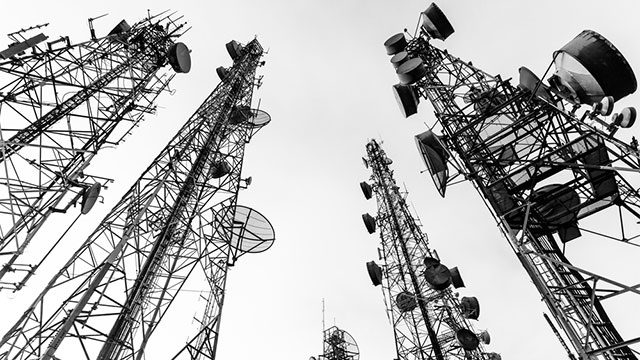SUMMARY
This is AI generated summarization, which may have errors. For context, always refer to the full article.

MANILA, Philippines – Philippine telecommunication giants urged government to streamline the processes of securing rights to mount cell sites which they said is critical to expedite service improvements in the industry.
“We want LGUs (local government units) to follow standard and transparent procedure so telcos will know exactly where these fees go, and could contest whether they are reasonable or not,” said Derek Lim, Globe Telecom’s senior vice president for corporate and legal services.
Lim, along with other industry stakeholders, were present in a Senate hearing on Wednesday, January 28, discussing the impact of slow and expensive Internet connection.
Globe and the Philippine Long Distance and Telephone Company (PLDT), raised one major concern: the lengthy processes and exorbitant fees several LGUs require them.
Case in point was the December 18, 2014 Court of Appeals (CA) decision that favored Globe, when the appellate court nullified and declared void a Santiago City, Isabela ordinance that asked them to pay tower fees at P200,000 ($4538.60) per year.
Globe questioned the legality of the ordinance before the Department of Justice. The Ayala subsidiary owed the Isabela LGU P5.9 million ($133,888.55) worth of combined 2008-2010 fees for its 7 towers in the city.
The fee was based on the city’s tariff it charges to companies at P200,000 ($4,538.60) per tower and on an annual basis.
But the CA decision said, “we cannot allow the imposition of tower fees in the amount of P200,000 as the same is patently oppressive, confiscatory, and prohibitive.”
Lengthy and costly processes
During Wednesday’s hearing, Lim elaborated the lengthy processes telcos deal with in securing tower permits alone. He said there are at least 10 permits they need to secure from LGUs before a cell site is cleared for construction.
These include getting consent from neighboring residents, barangay resolutions, a certificate of non-coverage, environmental clearance, zoning clearance, as well as clearances from the National Council on Indigenous Peoples if the proposed cell site sits on an ancestral domain.
“In general, it takes 6 months to put up a tower,” said Lim.
Ramon Isberto, head of PLDT’s public affairs, backed Globe’s suggestion, saying red tape problems is an industry-wide concern.
“It makes us more difficult for operators to roll out their facilities and maintenance, and of course that can have an impact on the service,” Isberto told Rappler in a follow-up interview.
Responding to telco operators, Department of Interior and Local Government Undersecretary Tom Villarin said the government can only do as much to align processes of LGUs.
“We cannot demand from LGUs some sort of template,” said Villarin.
Angelica Sanchez, director for policy development at the League of Provinces, suggested the telcos to course their proposal through different leagues such as the League of Municipalities in the Philippines.
“What we can do is to somehow stick to this anti-red tape provisions and by strictly observing timelines,” said Sanchez.
Telecommunication players have been invited to several series of public consultation to explain why the country is suffering poor, broadband connection speed.
The National Telecommunications Commission is pushing for a legislation that would identify broadband as a basic service so that the government could regulate it.
PLDT and Globe have both revised its revenue mix over the years, migrating from its legacy landline business unit to their wireless mobile units.
But London-based Fitch Ratings warned that the country’s telco operators will achieve lower profits and incur higher capital expenditure due to a need fulfill a growing demand for data services. – Rappler.com
(US$1 = P44.07)
Telecommunications tower image from Shutterstock
Add a comment
How does this make you feel?
There are no comments yet. Add your comment to start the conversation.